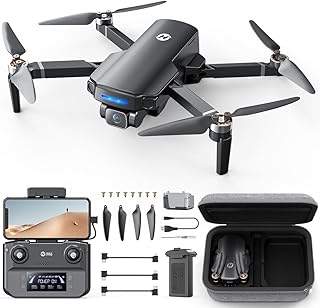The Future of Drone Regulation: Striking a Balance between Innovation and Safety
The rapid evolution of drone technology presents both exciting possibilities and significant regulatory challenges. Striking a balance between fostering innovation and ensuring safety is crucial for the responsible integration of drones into our airspace.
Current Landscape:
* Rapid Innovation: The drone industry is experiencing exponential growth, with advancements in battery life, autonomous flight, and payload capabilities happening constantly.
* Varying Regulations: National and regional regulations for drone operation vary widely, leading to confusion and potential inconsistencies.
* Safety Concerns: Concerns exist about drone-related accidents, privacy violations, and potential misuse for illegal activities.
Key Considerations for the Future of Drone Regulation:
1. Clear and Consistent Regulations: Harmonizing national and international regulations is essential for creating a stable and predictable environment for drone operators and manufacturers.
2. Technology-Agnostic Approach: Regulations should focus on safety outcomes rather than specific technologies, allowing for flexibility as the industry evolves.
3. Risk-Based Framework: Implementing a risk-based framework for drone operations, considering factors like altitude, airspace, and payload, can tailor regulations to specific use cases.
4. Data and Technology Integration: Leveraging data analytics, artificial intelligence, and remote identification technologies can help monitor and manage drone operations effectively.
5. Public Engagement and Education: Building public trust and understanding is essential for the responsible integration of drones.
6. Collaboration and Partnerships: Collaboration between governments, industry, and research institutions is crucial for developing effective regulatory frameworks and promoting innovation.
Examples of Emerging Regulatory Trends:
* Beyond Visual Line of Sight (BVLOS) Operations: Regulations are being developed to enable safe and controlled BVLOS operations, expanding drone applications in sectors like agriculture, infrastructure inspection, and delivery.
* Drone Traffic Management (UTM): UTM systems are being developed to manage drone traffic efficiently and safely, similar to air traffic control for traditional aircraft.
* Geo-fencing and No-Fly Zones: Implementing geo-fencing technology and designated no-fly zones can restrict drone operation in sensitive areas or for specific activities.
* Remote Identification and Tracking: Mandating remote identification systems for drones allows authorities to track and identify unauthorized operations.
Challenges and Opportunities:
* Balancing Innovation and Safety: The challenge lies in creating regulations that foster innovation while maintaining a high level of safety.
* Privacy Concerns: Addressing privacy concerns related to data collection and surveillance by drones requires careful consideration and appropriate safeguards.
* Cybersecurity: Securing drones against hacking and unauthorized access is essential for maintaining airspace security and preventing potential misuse.
Conclusion:
The future of drone regulation is about achieving a delicate balance between promoting innovation and ensuring safety. Through a collaborative, data-driven, and flexible approach, we can harness the transformative potential of drone technology while safeguarding our skies and communities. By embracing a future where innovation and safety go hand-in-hand, we can unlock the full potential of this exciting technology for the benefit of all.


